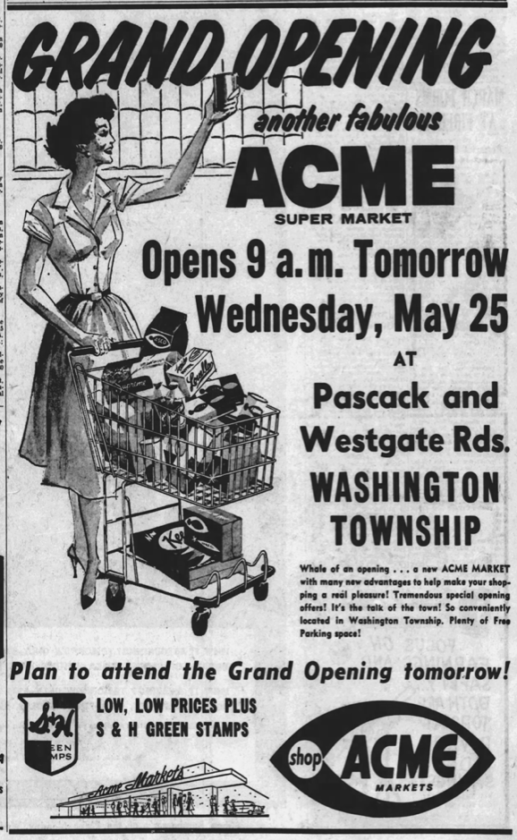
TOWNSHIP OF WASHINGTON—At the dawn of the 1960s, things were changing fast in the Township of Washington.
A postwar Baby Boom and construction surge had brought unprecedented population growth to the 3-square-mile town, as the Greatest Generation was looking to settle in the suburbs and raise families. Building houses was a big business, as the township was subdivided into lots and hundreds of ranches and Cape Cods went up on newly mapped streets.
In 1955 one could buy a new three-bedroom ranch on a 75-by-100-foot lot in the township for about $15,000. The Township of Washington was the fastest growing community in New Jersey during that era.
As incredible as it sounds to us today, as late as the 1940s the Township of Washington’s population was under 500 people. A commercial element was almost non-existent. Residents had to go to larger neighboring towns, like Westwood and Ridgewood, for their shopping needs.
The population growth that took place in the decades after World War II can only be described as an explosion. By 1960 there were 6,600 people living in the Township of Washington. It is difficult to imagine what it must have been like for the old-timers who had spent their lives in the township. Their little rural town of 500 saw more than 6,000 newcomers move in over a 20-year period. Great swaths of forest and field had been cleared and turned into streets lined with houses.
The township had become a real suburb, and with that, the people were clamoring for the convenience of a shopping center in town. The issue became a talking point during election season. For local officials, it was a balancing act: the need to “shop local” was tempered by the idea that it was the quaint nature of the township that had drawn so many people there in the first place.
The solution took the form of a municipal master plan, the town’s first, that rezoned for a single shopping area on Pascack Road, centered on an 11-acre site. In this way, local officials hoped to provide for the residents’ shopping needs while also keeping the commercial element tucked neatly onto a single location.
The owners of that 11-acre tract, home builders James Leone and John Durante, had bought it with different plans in mind. However, with some urging, and some concessions on the township’s part as well, they agreed to change course and build a shopping center.
The original anchor store was an Acme supermarket located where The Fresh Grocer is today. The advertisement on this page ran in local newspapers before the grocery store’s grand opening on May 25, 1960.

For those who were doing their Memorial Day grocery shopping at the new Acme, in 1960 they could expect to find sirloin steaks on sale for 79 cents a pound and Porterhouse at 85 cents a pound. Ground chuck was 69 cents per pound and a package of eight hamburger buns cost 25 cents. Watermelons were 7 cents a pound, while corn was 10 ears for 55 cents. A family-size bag of potato chips went for 39 cents. For dessert, Gold Crest ice cream was 59 cents per half-gallon and Virginia Lee pies were 50 cents each.
If you shopped carefully, back then you really could have a family barbecue for just a few dollars.
Can you remember when stores gave out the S&H Green Stamps? The now-defunct program was extremely popular in the 1960s. The Sperry & Hutchinson company sold them to grocery stores, who in turn gave them to consumers, 10 stamps for every dollar spent, as an incentive to shop there. People would save up the stamps and exchange them for items from the S&H “Ideabook” catalog. The catalog had home decor, appliances, dish sets, sporting goods, accessories, electronics, furniture, toys, and lots more. You could get anything from a set of golf clubs to a silver tea service.
The new shopping center quickly became a center for local life in the township. On June 10, 1960, the fire department put on a public display of its firefighting equipment outside the Acme. Two weeks later the Contemporary Woman’s Club held a flag sale in preparation for the Fourth of July. On that year’s Independence Day, the new 50-star flag was going to become official after the addition of Hawaii.
— Kristin Beuscher is president of Pascack Historical Society.
